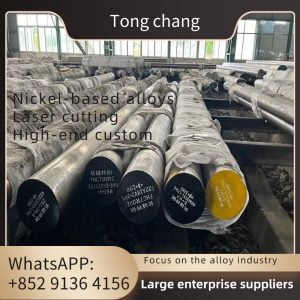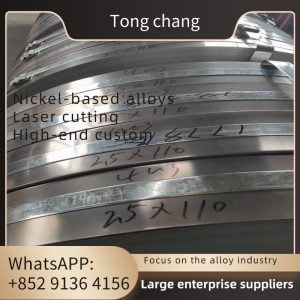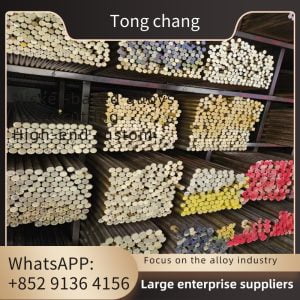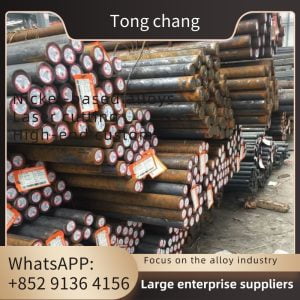| 材料 | TP304,TP304L,TP316L,TP317L | OD: | 最小外径 20 毫米,最大外径 219 毫米。 |
|---|---|---|---|
| WT: | 最小 2 毫米,最大 16 毫米 | 钛: | 2年级,7年级,12年级 |
| 铝 | Alu.1100,Alu.1060 | 长度 | 定制 |
| Fin Height Tolerance: | 定制 | 鳍片长度: | 定制 |
| 鳍片材料 | Stainless Steel, Carbon Steel, Alloy | 基管材料 | Stainless Steel, Carbon Steel, Alloy |
| 强光 | 不锈钢翅片管, 低翅片管, 热交换器翅片管 | ||
低翅片管 热交换器用不锈钢挤压翅片管
概述
铝挤压翅片管采用基管包铝管(基管可以是碳钢、不锈钢、铜)的形式,通过机器挤压形成翅片,翅片基部与管外壁紧密贴合,翅片管的控制可使翅片管具有较高的传热系数和传热性能。
铝挤压翅片管又称 "整体翅片管",采用基管包覆铝管(基管可以是碳钢、不锈钢、铜)的形式,通过机器挤压形成翅片,翅片基座与管外壁紧密贴合,这种翅片管的控制可以使翅片管具有较高的传热系数和传热性能。挤压翅片管可由铁管、铜管或铝管复合轧制而成,具有结合紧密、热阻小、传热性能好、强度高、流动损失小、耐腐蚀性强、在长期冷热条件下不易变形、使用寿命长等优点。
What's Fin Tube ?
Low-fin (integral) tube is an extruded tube composed of short and low fins, and a high-efficiency heat-exchange tube type in which threaded fins are formed on the outer surface of the heat-exchange tube by rolling. The tube and fin are in the same piece of tube, also known as "N" fin type.
Because Low Finned Tube is an integral tube, there is only one material for the tube and fins
We offer you a wide range of materials and can expand our offering at any time to meet your specific needs in terms of thermal conductivity, mechanical properties or corrosion resistance.
挤压成型翅片管的优点
与普通缠绕翅片管相比,接触热阻随温度变化而稳定,因此双金属铝挤压翅片管在极限壁温范围内的传热性能优于螺旋翅片管。
此外,与螺旋管相比,双金属铝挤压翅片管具有出色的耐腐蚀性和高强度,可承受 4.0MPa 的水压清洗,翅片仍不会从双金属铝挤压管的基座上脱落。可根据管内流体的腐蚀性和加工工艺选择管材。基管可以是碳钢、铜、不锈钢等。
热交换器的性能下降主要是由两种现象造成的,它们随着时间的推移而发生:
- 由于两种流体中都含有杂质累积,因此抗污能力更强。
- 由于材料的热循环膨胀以及翅片基部或根部的腐蚀,管子与翅片结合处的热阻增加。这些因素导致翅片和导管之间失去接触或结合压力。
| 类型 | 说明 | 底管 | 翅片规格(毫米) | ||
| 外径(毫米) | 翅片间距 | 鳍片高度 | 翅片厚度 | ||
| 嵌入式 | G 型鳍舌 | 16-63 | 2.1-5 | <17 | ~0.4 |
| 挤压 | 单一金属组合金属 | 8-51 | 1.6-10 | <17 | 0.2-0.4 |
| 低翅片管 t 型翅片管 | 10-38 | 0.6-2 | <1.6 | ~0.3 | |
| 竹筒波纹管 | 16-51 | 8-30 | <2.5 | / | |
| 伤口 | L/KL/LL 型鳍管 | 16-63 | 2.1-5 | <17 | ~0.4 |
| 字符串 | 弦翅管 | 25-38 | 2.1-3.5 | <20 | 0.2-0.5 |
| U 型 | U 型管 | 16-38 | / | / | / |
| 焊接 | 高频焊接翅片管 | 16-219 | 3-25 | 5-30 | 0.8-3 |
| H/HH 型翅片管 | 25-63 | 8-30 | <200 | 1.5-3.5 | |
| 带螺纹的鳍管 | 25-219 | 8-30 | 5-35 | φ5-20 | |
常见的应用领域有
- heat exchangers for power plants (electric, nuclear, thermal and geothermal power plants)
- high corrosive systems (condensers, evaporators, sea water desalinations, fertilizing, urea systems, ammonia, gas, corrosive acids)
- chemical and petrochemical industries
- food processing and refrigeration industries.







